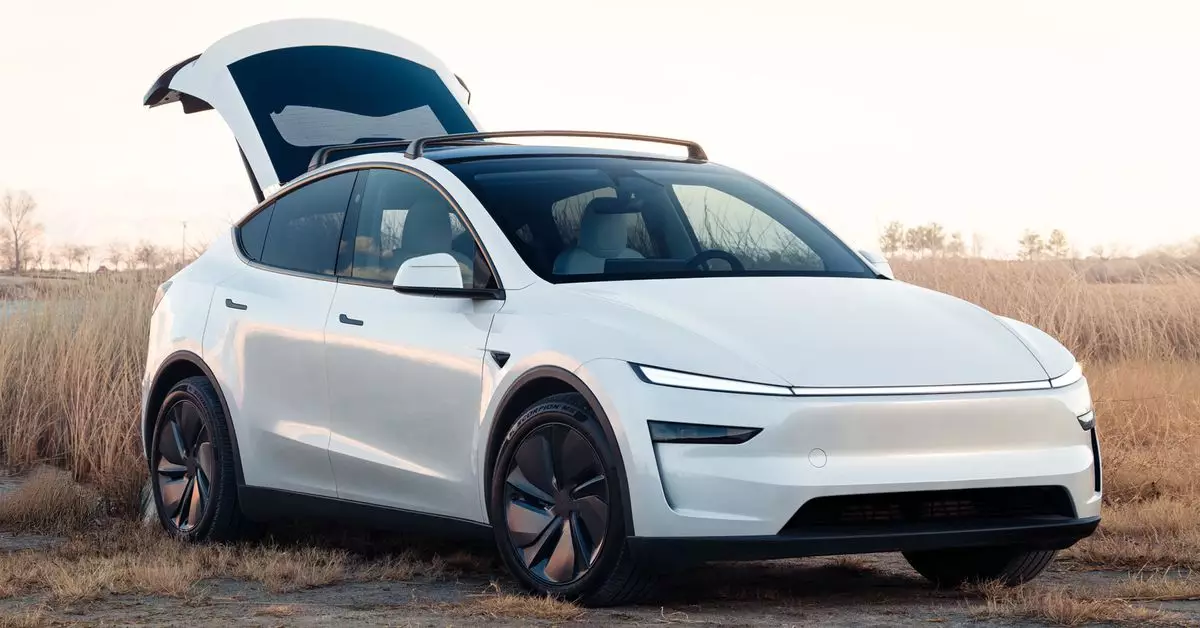Tesla continues to make headlines with its bold moves in the electric vehicle market, and the recent release of the “Juniper” Model Y marks yet another step in the company’s evolution. Following a successful launch in Asia-Pacific regions, Tesla has begun accepting orders in North America and Europe. However, while the revamped design and features may excite some consumers, there are underlying concerns regarding the brand’s status and performance that cannot be overlooked.
The Juniper Model Y represents Tesla’s commitment to innovation and improvement within its product line. Priced at $59,990, the Launch Series is the only version available for order in the U.S. This highly equipped model comes with premium features such as Full Self-Driving (albeit supervised) capabilities and an Acceleration Boost that can attract customers seeking advanced technology. Aesthetic enhancements, including redesigned front and rear lighting, a sleek new interior featuring an 8-inch touchscreen for rear-seat passengers, and a high-quality acoustic glass treatment, signify Tesla’s effort to enhance both comfort and functionality.
Additionally, the new sound system, boasting more speakers than its predecessor, promises an elevated auditory experience, while the retuned suspension aims to provide a smoother ride. However, some features, such as the turn signal stalk introduced in preview images, raise questions about Tesla’s design consistency, as the company has leaned heavily towards on-wheel buttons in its more recent models.
Despite the anticipation surrounding the Juniper Model Y, Tesla faces significant challenges. Recently, the company reported its first year-over-year decline in sales, an alarm bell for brand loyalty and consumer satisfaction. While the new Model Y boasts a promising lineup, with features that include a front-facing camera aimed at enhancing Autopilot capabilities, the changing marketplace dynamics may not be swayed by upgrades alone.
Adding to this concern, Tesla maintains production of its older Model Y version alongside the new release, signaling an attempt to capture a wider audience. The nominal price difference—around $4,000—between similar configurations of new and old models may incentivize buyers on a budget. Nevertheless, the coexistence of these models may muddle Tesla’s market message, as prospective buyers weigh the benefits of the new features against the potential for better savings with the older version.
Tesla has positioned the new Model Y to meet both efficiency and performance marks. The advertised range of 320 miles, while lacking EPA certification, suggests a slight improvement over the old version’s 311-mile estimate. This push for greater range reflects the competitive landscape of electric vehicles, where customers want assurances of reliability and performance over long distances.
Performance metrics reveal additional enhancements: the Juniper’s 0-60 mph time has improved to an impressive 4.1 seconds compared to the old version’s 4.8 seconds. However, Tesla made the controversial decision to cap the top speed at 125 mph, a departure from the previously allowed speed of 135 mph. This decision could resonate negatively with performance enthusiasts who value speed as a key aspect of their driving experience, particularly for a vehicle marketed towards families.
As Tesla navigates the complexities of a rapidly evolving automotive market, the Juniper Model Y serves as both an enticing offering for consumers and a litmus test for the company’s strategies. With a blend of new features and performance enhancements, the vehicle addresses some of the existing brand concerns while simultaneously highlighting the challenges that lie ahead.
Ultimately, success hinges on Tesla’s ability to sustain innovation while keeping pace with consumer expectations and market demands. The Juniper Model Y is a notable entry, but whether it will reinvigorate Tesla’s sales momentum or deepen existing challenges remains to be seen. As the automotive landscape shifts, Tesla must remain vigilant and adaptable, ensuring that its vehicles resonate with both current and future generations of drivers.


Leave a Reply